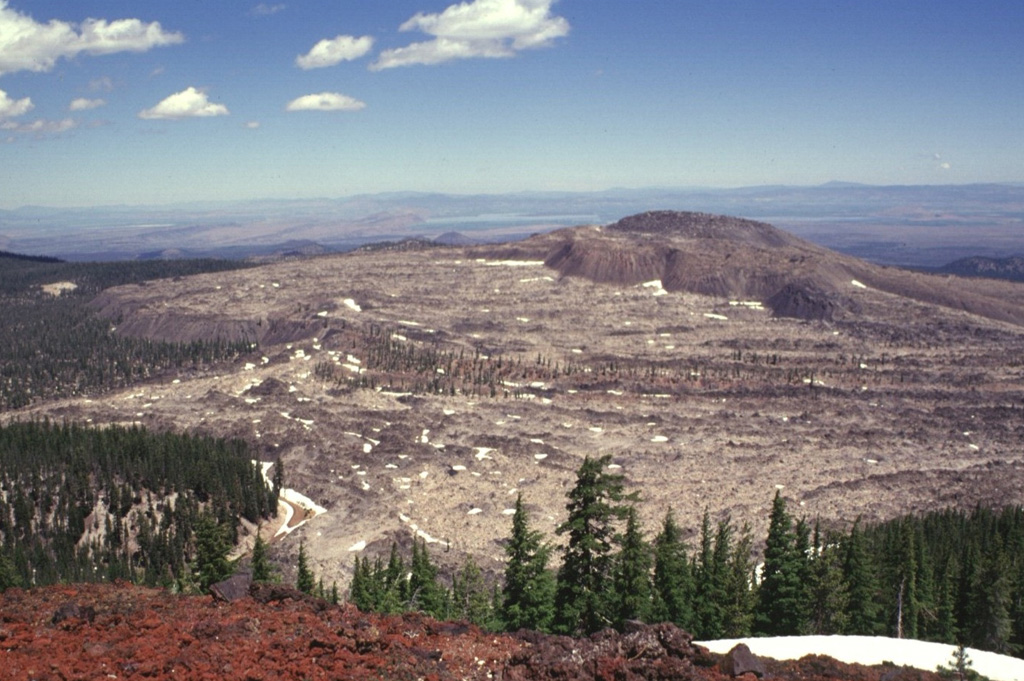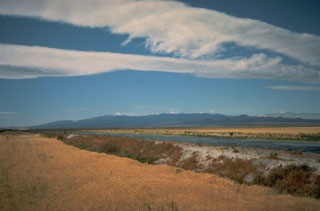Image GVP-06587

The Glass Mountain obsidian flow, seen here from Lyons Peak on the east rim of Medicine Lake caldera, was erupted from a series of vents just outside the buried inferred eastern rim of the caldera. The youthful, steep-sided rhyolitic and dacitic flow is both the largest and youngest of a series of Holocene rhyolitic and dacitic flows at Medicine Lake. The 1 cu km flow was erupted about 900 years ago. The flow traveled a short distance west (left) into the caldera, but mostly flowed down the eastern flank, reaching a point about 6 km from its source.
Photo by Lee Siebert, 1998 (Smithsonian Institution).
![]() This image is made available under the Public Domain Dedication CC0 license, but proper attribution is appreciated.
This image is made available under the Public Domain Dedication CC0 license, but proper attribution is appreciated.

Medicine Lake
